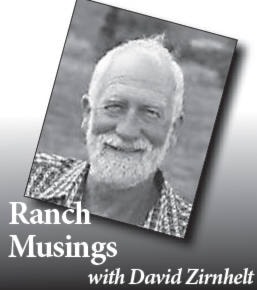I remember 50 years ago reading about how the U.S. government accounting office audited top soil loss on an annual basis.
It was disturbing to read about how the loss to soil erosion on farmland was close to four tons per acre per year. That adds up fast.
In the state of Tennessee this rate was 3.6 tons per acre in 2003, but only 2.6 tons for the U.S. as a whole, down somewhat from 50 years ago.
For Tennessee then it would take 46 years to lose one inch of topsoil down from one inch in 18 years, however, it takes 200 to 10,000 years to form that one inch of soil.
It is clear that conserving soil, then, is a better route than allowing degradation and then trying to rebuild replacement soil.
The rate of soil loss in the interior of BC is very low mainly because we don’t “farm” or cultivate the soil as frequently as the cropping areas: vegetables and grains for instance.
Much of our farmland is in perennial crops like hay and pasture where we don’t cultivate frequently.
Read more: When the smoke clears: life after the big one
In Canada the cost of soil degradation was last assessed in 1983.
Why am I dwelling on this? It is because just leaving soil with something growing on it may not be improving the health of that soil.
So we want to improve the productivity and sustainability of what has been called the foundation of civilization: SOIL.
The slowing down of soil erosion had been accomplished by the reduction of tilling (plowing, disking, harrowing, rotovating, subsoiling etc.) the soil.
Over half of the crops that are planted are done so using no-till or minimum till equipment. Seeds are sown directly into the remnants of the last crop.
However, most often, to reduce competition from weeds, spraying something to kill the competition to the desired crop is a common practice. Roundup is the product of choice for this purpose.
Organic producers not going to put herbicides on their crops because products like Glyphosate or Roundup have a bad reputation and are not approved substances for organic farming.
Some local producers, I for one, would like to try some of the new technology which is minimum tillage where the competition is reduced by grazing cattle to weaken the existing less desirable plants.
These seeders actually cultivate a narrow band of the sod say one and a half inches wide and prepare a seedbed for new seeds. I have written about many of the available cover crop plants like alfalfa or clover or radishes or turnips etc., etc. where one plants varieties that enhance certain aspects of the soil where weakness exist.
We know that recent assessments of these “conservation tillage” strategies (BC Climate Action. Initiative website: Farm practices-Conservation Tillage) suggest we should get on with trying some of newer technologies.
Are you a rancher/ farmer and interested? Be in touch if you are. My phone number is 250-243-2243. E-mail: davidzirnhelt@hotmail.com.
David Zirnhelt is a rancher and member of the Cariboo Cattlemen’s Association. He is also chair of the Advisory Committee for the Applied Sustainable Ranching Program at TRU.
news@wltribune.com
Like us on Facebook and follow us on Twitter
